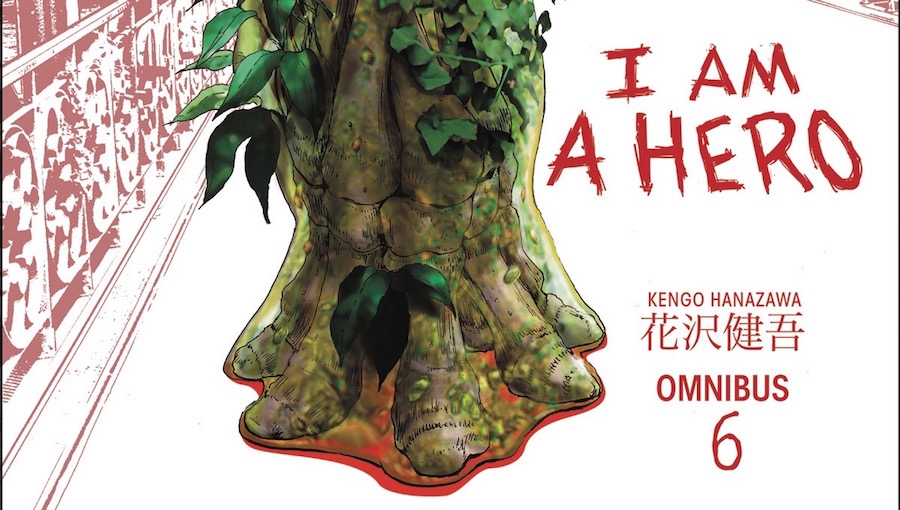You don’t read I Am a Hero, the zombie epic by Kengo Hanazawa, you full on experience it. From the first book, I knew it would be special. I knew I had to read every volume as it came out, but I would have never been able to tell you that this is where we would be after reading the final pages of Omnibus 6. This series continuously undercuts expectations and presents to you a reality unexpected. It’s a constant mind-f***, an emotional battering ram, an exhilarating lightning rod of a read in which you experience this absurd, outrageous, and terrifying world along with this oddball assortment of survivors. It’s exactly how you would expect a zombie apocalypse to break the rules of everything you knew to be true. Here, the zombies (known as ZQNs) are transfixed with repeating their day-to-day life. Why? How? Omnibus 6 toys with some answers while presenting a sort of hierarchy of ZQNs that could spell the demise of the remaining survivors.
More than anything, the “oddball assortment of survivors” are part of what keeps you off guard as you roll from page to page. You have no idea how any of the humans will react or respond to each other. Each character is a ball of chaos, damaged mentally and psychologically in their own ways. They survive because they are not necessarily good people. Even though the title suggests it, this isn’t a story of heroes… except for maybe one, but he is mostly absent from this volume. Instead, we follow a new group of survivors introduced to us in Omnibus 5, a group that is led by probably one of the most frightening manifestations of the id that I have ever seen. I want to guess at what’s to come next, but I don’t dare.
There is an undercurrent of sexuality skewed within the story and characters. While the ZQNs repeat their daily routines, the survivors are freer to let the safeguards of social norms begin to slip away, though Hanazawa mines humor in what norms they continue to feel guilty about breaking. Even the ZQNs, in their unnatural state, present a potentially unnatural cycle of life, and emotions hinted at in previous books and explored in greater depth here.
Hanazawa’s art continues to meld beauty and violent surrealism in ways that few artists can muster. It’s a large part of the draw of the book – this cinematically visceral world where even the drawings of still landscapes bring with them a
sense of dread. The few violent things I witnessed in real life bring with them a sense of surrealism, a feeling that it’s not quite happening; this is the nightmarish feeling that Hanazawa has captured.
If this isn’t enough to convince you to start reading, I don’t know what would be. It’s one of the most brilliant (and probably one of my favorite) zombie stories of all time.
Creative Team: Kengo Hanazawa (story, art), Kumar Sivasubramanian (Translation), Philip R. Simon (English adaptation), Steve Dutro (letters)
Publisher: Dark Horse
Click here to purchase.

